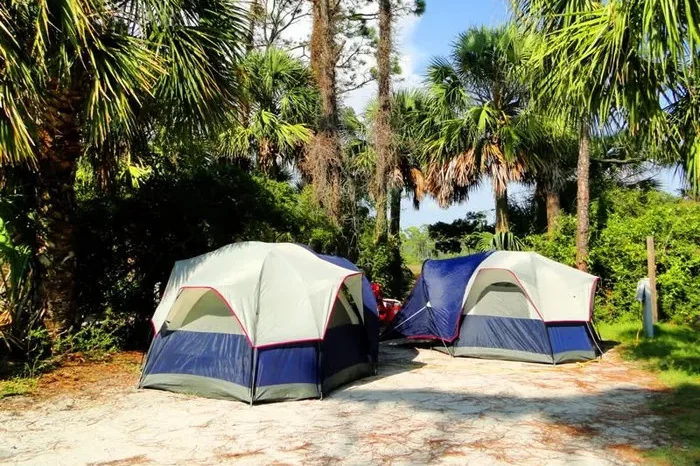Camping is a cherished outdoor activity that allows us to connect with nature, unwind from the daily hustle, and create lasting memories. One of the most critical decisions for any camping trip is selecting the right tent. Your tent is not just a shelter; it’s your home away from home, providing protection from the elements and a comfortable retreat after a day of adventure. With a plethora of tent options available, choosing the perfect one can seem daunting. This guide will walk you through the essential factors to consider when buying a camping tent, ensuring you make an informed and satisfying choice for your outdoor excursions.
Understanding Tent Types
Before diving into specific features, it’s crucial to understand the various types of tents available:
1. Dome Tents: These are popular for their simple setup, stability, and ability to shed rain and wind effectively. Dome tents are suitable for a wide range of camping scenarios and are often preferred by backpackers due to their lightweight design.
2. Cabin Tents: Known for their spacious interiors and vertical walls, cabin tents provide ample headroom and room to move around comfortably. They are ideal for family camping trips where comfort and space are priorities.
3. Tunnel Tents: Characterized by their elongated shape, tunnel tents are lightweight and offer a good balance between space and weight. They are popular with backpackers and campers looking for a versatile shelter.
4. Pop-Up Tents: Designed for ultra-quick setup, pop-up tents are convenient for casual campers and festival-goers. They are compact and easy to transport but may lack the durability of other tent types.
5. Backpacking Tents: These tents prioritize weight savings and packability, making them ideal for backpackers and adventurers who need to carry their shelter over long distances. They often feature lightweight materials and streamlined designs.
Key Considerations for Choosing a Camping Tent
When selecting a tent, several important factors should guide your decision-making process:
1. Capacity: Determine how many people will regularly use the tent. Tent capacity ratings typically refer to the number of sleeping pads that can fit inside. Keep in mind that a larger tent offers more comfort but may be heavier and bulkier to transport.
2. Seasonality: Consider the seasons in which you’ll be camping. Three-season tents are suitable for spring, summer, and fall, offering ventilation and weather protection. For winter camping or harsh conditions, a four-season or winter-specific tent is recommended.
3. Weather Resistance: Look for tents with sturdy construction and waterproof materials. Features like sealed seams, a durable rainfly, and a robust frame are essential for weathering storms and keeping you dry during rainy nights.
4. Weight and Portability: If you plan to hike or backpack with your tent, prioritize lightweight models that pack down small. Conversely, if you’re car camping, a heavier and more spacious tent may be acceptable.
5. Ease of Setup: Evaluate how straightforward the tent is to pitch, especially if you’ll be setting it up frequently or in challenging conditions. Some tents come with color-coded poles or intuitive designs that simplify the setup process.
6. Interior Space and Layout: Consider the tent’s interior layout, including the number and placement of doors, windows, and storage pockets. A well-designed interior enhances comfort and convenience during your camping trip.
7. Durability: Invest in a tent made from robust materials that can withstand repeated use and exposure to the elements. Reinforced seams, quality zippers, and durable fabrics contribute to the longevity of your tent.
8. Ventilation: Proper airflow is crucial for preventing condensation buildup inside the tent. Look for tents with mesh panels and adjustable vents that facilitate airflow without compromising weather protection.
Additional Features to Look For
In addition to the fundamental considerations outlined above, several features can enhance the functionality and comfort of your camping tent:
1. Footprint: A footprint is a ground cloth that goes beneath the tent, providing an extra layer of protection against moisture and abrasion.
2. Vestibules: These covered areas outside the tent doors provide space for storing gear and keeping muddy boots out of the sleeping area.
3. Freestanding vs. Non-freestanding: Freestanding tents can be pitched without stakes and are easier to move once set up. Non-freestanding tents require stakes for setup but often offer a lighter weight.
4. Tent Poles: Aluminum poles are lightweight and durable, while fiberglass poles are more affordable but heavier.
5. Color: Brightly colored tents are easier to spot in a crowded campground or in an emergency situation.
6. Price: Set a budget based on your needs and preferences, balancing affordability with desired features and quality.
Conclusion
Choosing the right camping tent involves balancing a variety of factors, from tent type and capacity to weather resistance and ease of setup. By carefully considering your camping style, destination, and budget, you can select a tent that enhances your outdoor experiences and provides reliable shelter wherever your adventures take you. Remember, a well-chosen tent is not just a practical investment; it’s the cornerstone of memorable camping trips filled with comfort, security, and the wonders of the great outdoors.

